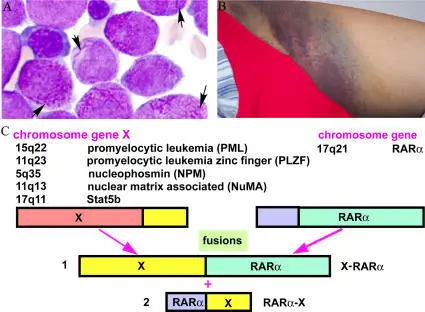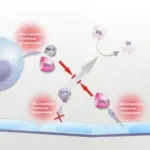Disseminated intravascular coagulation is the sudden or insidious onset of widespread thrombosis within the microcirculation.
What is the Pathology of Disseminated Intravascular Coagulation?
The pathology of disseminated intravascular coagulation is:
-Etiology: The cause of disseminated intravascular coagulation is the systemic activation of thrombin that causes consumptive coagulopathy. It can also be due to sepsis, surgery, major trauma, cancer, and complications of pregnancy.
-Genes involved: None.
-Pathogenesis: The sequence of events that lead to disseminated intravascular coagulation includes the release of tissue factor or thromboplastic substances into the circulation or widespread endothelial cell damage.
-Morphology: The morphology associated with disseminated intravascular coagulation shows that microthrombi are most often found in the arterioles and capillaries of the kidneys, adrenals, brain, and heart, but no organ is spared. The glomeruli contain small fibrin thrombi. These may be associated with only a subtle, reactive swelling of the endothelial cells or varying degrees of focal glomerulitis.
-Histology: The histology associated with disseminated intravascular coagulation shows the presence of ischemia and necrosis due to fibrin deposition in small and medium-sized vessels of various organs.
How does Disseminated Intravascular Coagulation Present?
Patients with disseminated intravascular coagulation typically affect males present at the age range of 40 and above, mostly in advanced age. The symptoms, features, and clinical findings associated with disseminated intravascular coagulation include circulatory insufficiency, particularly in the brain, lungs, heart, and kidneys, bleeding diathesis, shock, with acute renal failure, dyspnea, cyanosis, convulsions, and coma, copious postpartum bleeding or by the presence of petechiae and ecchymoses on the skin, severe hemorrhage into the gut or urinary tract.
How is Disseminated Intravascular Coagulation Diagnosed?
Disseminated intravascular coagulation is diagnosed based on prolongation of the prothrombin time, declining platelet count, characteristic history, and peripheral blood smear showing schistocytes.
How is Disseminated Intravascular Coagulation Treated?
Disseminated intravascular coagulation is treated depending upon the underlying cause, plasma transfusion, or fresh frozen plasma, heparin.
What is the Prognosis of Disseminated Intravascular Coagulation?
The prognosis of disseminated intravascular coagulation is fair depending on the nature of the underlying disorder and the severity of the intravascular clotting and fibrinolysis.



